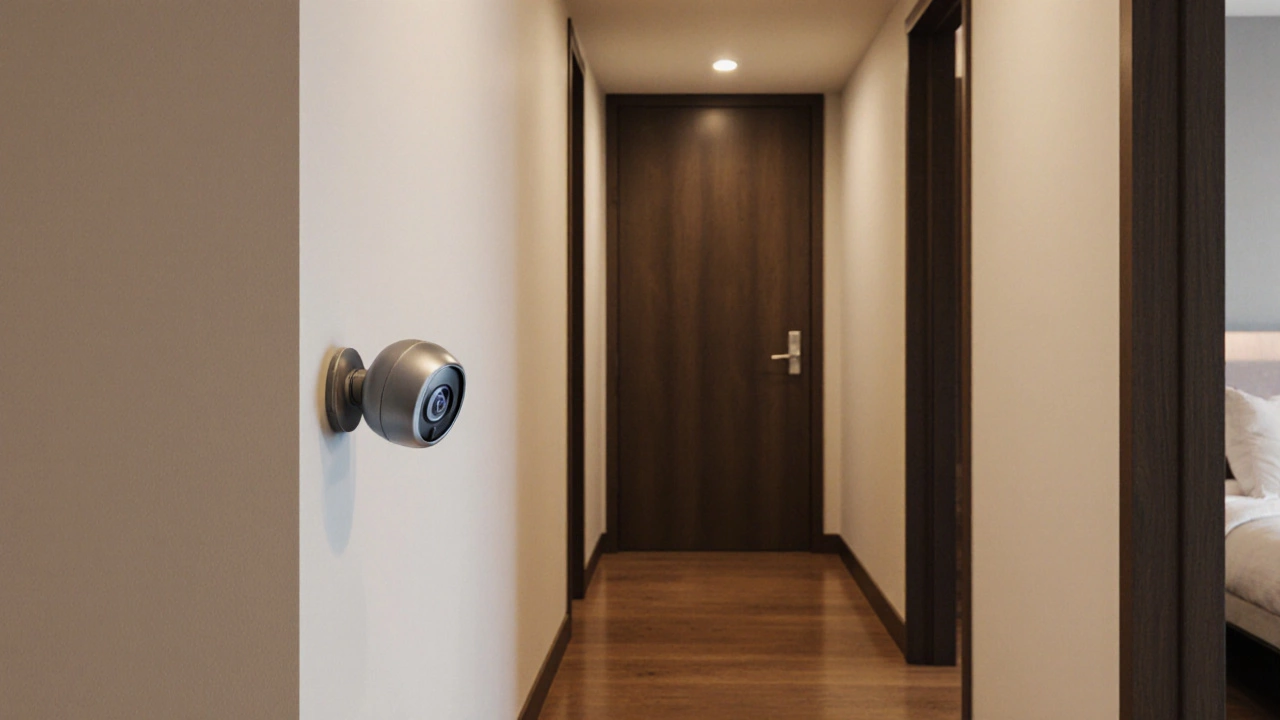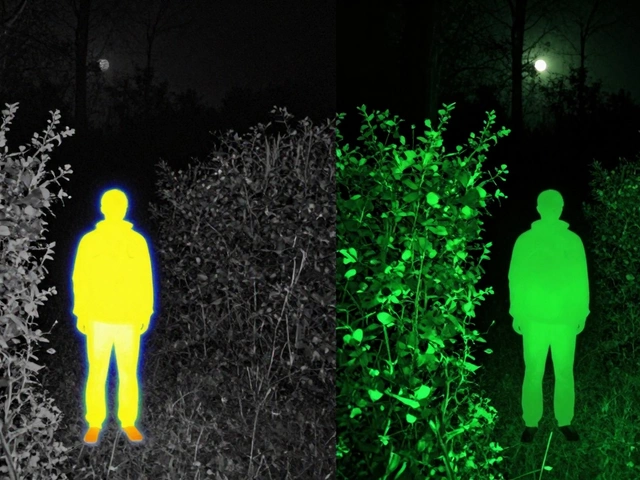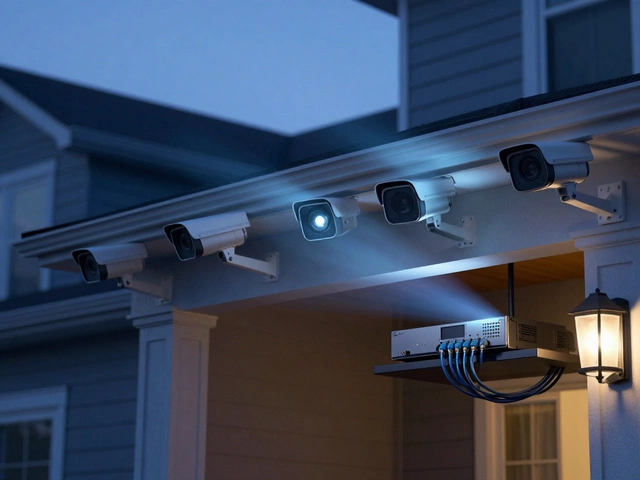Security Camera Placement Validator
Check Your Camera Placement
Select a location type from the dropdown below to see if it's prohibited by privacy laws or technical guidelines. This tool helps you avoid legal issues and technical failures with your security system.
Placement Results
Select a location firstSelect a location type and click "Validate Placement" to see if it's prohibited.
Recommended Alternative
No recommendation available
Key Takeaways
- Avoid any camera inside bedrooms, bathrooms, changing rooms, or any space where people expect privacy.
- Never point a camera at a neighbor’s yard, windows, or driveway without written consent.
- Keep lenses away from direct sunlight, interior windows, and bright light sources to prevent glare and loss of detail.
- Mount cameras on the building structure, not on trees or poles, and conceal all cable runs.
- Follow industry‑specific rules - no cameras near POS terminals, in classrooms, or in medical exam rooms unless you meet strict consent and security standards.
Installing security camera placement isn’t just about covering blind spots; it’s also about staying on the right side of the law and respecting privacy. A mis‑placed lens can trigger costly fines, create blind spots, or even render your whole surveillance system useless. Below you’ll find a step‑by‑step guide that tells you exactly where NOT to install your security cameras. By the end, you’ll know the legal landmines, the technical pitfalls, and the industry‑specific rules that keep you safe and compliant.
Legal & Privacy Foundations
Across the globe, privacy laws dictate what you can record. In the European Union, the GDPR treats video footage that can identify individuals as personal data. Recording without a lawful basis can lead to fines of up to 4% of annual turnover. In the United States, the BIPA (Illinois Biometric Information Privacy Act) bans facial‑recognition cameras in areas where people have a reasonable expectation of privacy and imposes penalties of up to $5,000 per violation. Healthcare facilities face the HIPAA rules, which prohibit cameras in treatment rooms and any location where protected health information (PHI) could be captured. Violating these statutes can bring fines ranging from $1,000 to $50,000 per incident.
Beyond national regulations, the PCI DSS security standard forbids cameras within four feet of point‑of‑sale terminals because they could capture card‑holder data. Schools must respect the FERPA privacy act, which blocks surveillance in classrooms and dormitories without explicit consent. And the ADA restricts cameras in changing or locker rooms to protect individuals with disabilities.
Private Interior Spaces - The No‑Go Zones
The most obvious prohibited spots are places where people expect total privacy. According to a 2024 Security.org study, 92% of professionals agree that bedrooms and bathrooms must never be under surveillance. Recording in a bedroom could expose intimate moments, while a bathroom camera would violate both state privacy statutes and the federal Fourth Amendment interpretation of a “reasonable expectation of privacy.”
Changing rooms, locker rooms, and shower areas fall under the same rule set. The American Civil Liberties Union (ACLU) says these spaces are protected under Title II of the ADA. Fines can reach $75,000 per violation when a camera captures undressed individuals.
Even seemingly harmless locations like a kitchen or living room become problematic when a camera is angled to view an adjacent bedroom door or a private office space where confidential meetings happen. Always ask: “Would the homeowner or tenant feel comfortable with a camera here?” If the answer is no, you’ve found a prohibited location.
Neighbor Privacy - Avoid Legal Battles with the Block
Neighbors are quick to sue if you point a camera into their yard, windows, or driveway. The National Association of Realtors (NAR) reports that 43% of neighborhood disputes involve unwanted camera views. States such as California have an Invasion of Privacy Act (Section 647(j) Penal Code) that levies $1,000‑$5,000 fines for each recorded incident.
Best practice: aim cameras only at your property line, and place clear signage where cameras cover public sidewalks. The Electronic Frontier Foundation (EFF) logged 17 lawsuits in 2023 where homeowners paid an average of $8,200 in damages for accidentally filming neighbors.
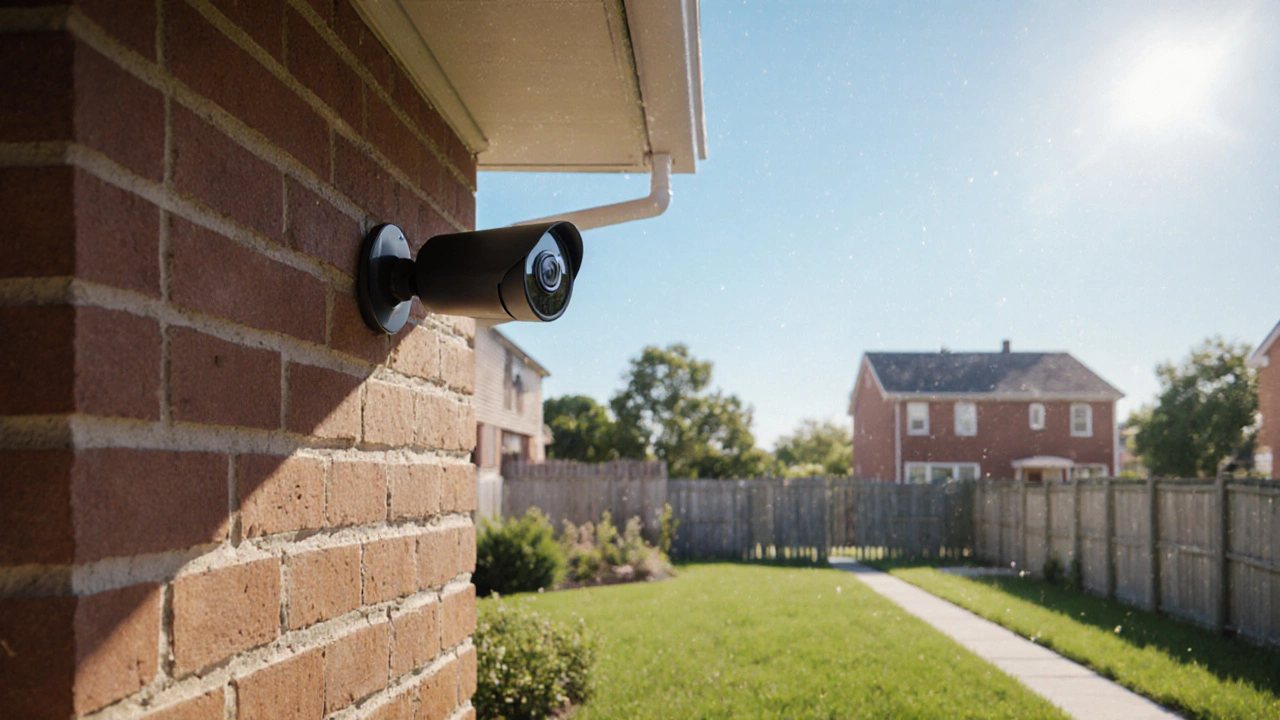
Technical Placement Errors - Light, Windows, and Angles
Even if you’re legally in the clear, bad technical choices cripple your system. One common mistake is mounting a camera inside looking out through a window. The glass reflects ambient light straight into the lens, creating a glare that can hide up to 90% of the scene during daytime. John Honovich of IPVM recommends a minimum 15‑degree angle between the lens and the glass; his field tests show optimal performance at 22‑30 degrees.
Direct sunlight is another enemy. The NIST 2023 study found that cameras facing the sun between 10 am and 4 pm missed the required 20 pixels‑per‑face identification standard in 89% of cases. Position cameras to receive only indirect light, or use lens hoods and IR filters for night‑vision models.
Fluorescent fixtures, LED strips, and reflective surfaces within ten feet of the lens cause “blooming,” which the CCTV Camera World Technical Manual (2024) says reduces image clarity by 65‑80%. Keep bright light sources out of the frame, or tilt the camera enough to avoid direct exposure.
Structural and Hardware Issues - Where Not to Mount
Mounting cameras on trees, poles, or any unstable structure looks clever but creates blind spots. Backstreet Surveillance’s 2023 analysis shows a 4.2‑times higher failure rate when a camera is placed on a tree because branches can obscure the view and intruders can easily cut the mounting point. Aim for solid walls or ceiling mounts.
Height matters too. Cameras below six feet are easy to tamper with; those above twelve feet lose facial detail, dropping identification accuracy by up to 50% (DTiQ 2024). The sweet spot is 8‑10 feet for most outdoor installations.
Exposed cables are a safety hazard and a compliance fail. The UL 2802 standard (2024) requires all wiring to be concealed within conduit or wall cavities. Exposed runs degrade in 18‑24 months due to UV exposure and can cause fire hazards.
Industry‑Specific Restrictions
Retail environments must keep cameras at least four feet away from point‑of‑sale terminals to stay PCI‑DSS compliant. In schools, FERPA demands written consent before any camera records a classroom or dormitory. OSHA 1910.141(c)(1)(iv) bans cameras inside employee break rooms and restrooms, with average citation penalties of $15,632.
Medical facilities are bound by HIPAA: no cameras in examination rooms, treatment areas, or anywhere PHI could be captured. Violations can attract $50,000 per incident.
Hospitality venues often overlook common areas like hotel lobbies. While public, these spaces still need signage and must not capture guests in private moments (e.g., when a guest steps into a bathroom from a lobby view).
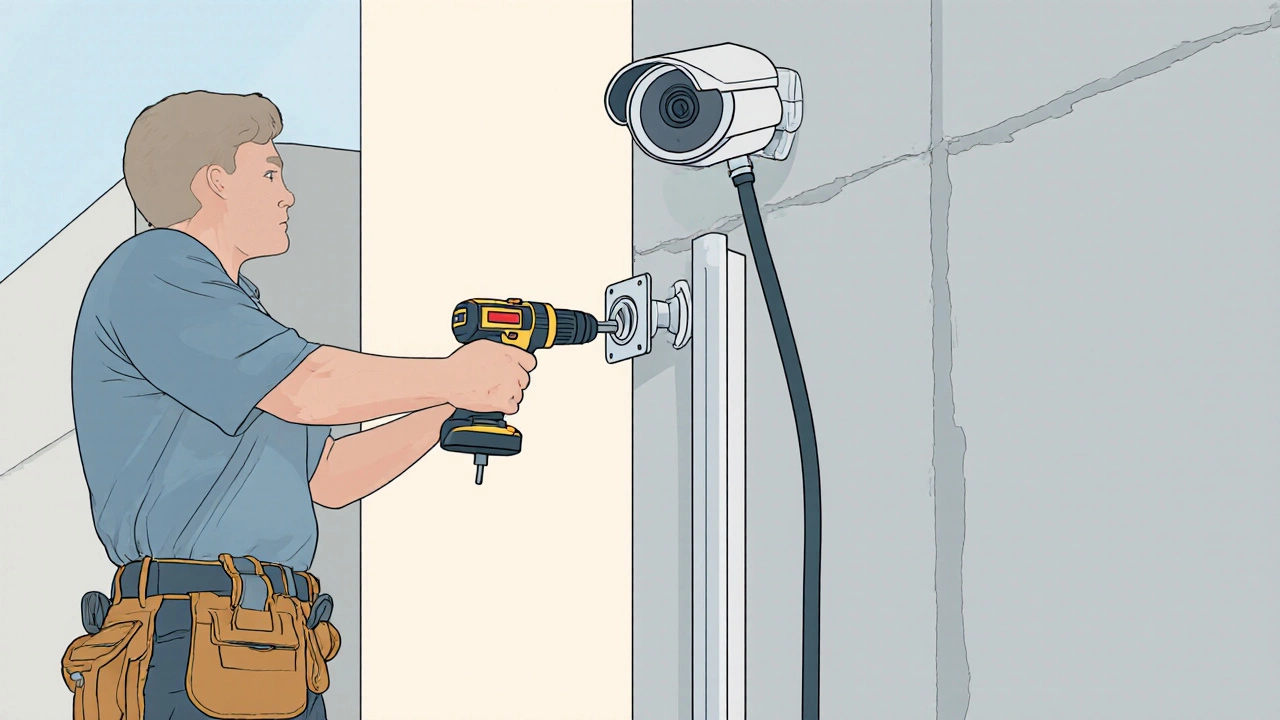
Quick Reference: Prohibited vs. Recommended Locations
| Location | Prohibited? | Why? | Recommended Alternative |
|---|---|---|---|
| Bedrooms / Bathrooms | Yes | Violates privacy expectations; legal fines (BIPA, state privacy statutes) | Hallway entry points only, with motion‑triggered lights |
| Changing/Locker Rooms | Yes | ADA & ACLU privacy protections; up to $75k penalties | Exterior perimeter only |
| Neighbor’s Yard / Windows | Yes | State invasion‑of‑privacy acts; civil damages | Own property line; use signage if public sidewalk view is needed |
| Inside looking out through glass | Yes | Glare reduces image quality 70‑90% | Mount outside, angled 22‑30° from glass |
| Direct sunlight / bright lights | Yes | Blooming & loss of facial detail (NIST 2023) | Shade, overhangs, or IR‑enabled lenses |
| Tree / pole mounts | Yes | Blind spots; easy tampering (Backstreet 2023) | Solid wall or ceiling mounts |
| Below 6 ft / above 12 ft height | Yes | Vulnerability or loss of identification accuracy (DTiQ 2024) | 8‑10 ft optimal range |
| Exposed cable runs | Yes | UL 2802 compliance; UV degradation | Conceal in conduit or within walls |
| Near POS terminals | Yes | PCI‑DSS violation; potential card data capture | Maintain 4 ft clearance |
| Classrooms / Dormitories (without consent) | Yes | FERPA breach; civil penalties | Obtain written consent, use limited‑area lenses |
Final Checklist - Before You Mount
- Ask if the area is a space where people expect privacy.
- Verify local and federal privacy statutes (GDPR, BIPA, HIPAA, etc.).
- Confirm the camera angle avoids windows and direct sunlight.
- Ensure mounting height is between 8‑10 ft.
- Run all cabling through conduit or walls.
- Get written permission if you must film a neighbor’s property.
- Check industry‑specific guidelines (PCI‑DSS, FERPA, OSHA).
Frequently Asked Questions
Can I install a camera inside a bedroom if I only record when I’m away?
No. Even intermittent recording in a bedroom violates privacy laws in most jurisdictions. The expectation of privacy in a sleeping area is absolute, and fines apply regardless of recording schedule.
What’s the safest angle for a camera looking out a window?
Aim for at least a 22‑degree angle from the glass surface. This reduces reflection enough for most lenses while still capturing the exterior area.
Are there any exceptions for filming a neighbor’s driveway?
Only with written consent from the neighbor. Some states allow limited public‑area recording, but a driveway is considered private property unless the owner agrees.
Do I need to hide wires for an outdoor camera?
Yes. UL 2802 requires all exterior cabling to be protected in conduit or buried. Exposed wires will fail faster and can cause safety hazards.
What height should I avoid for a front‑door camera?
Avoid mounting below 6 ft (easy to tamper) and above 12 ft (loss of facial detail). The 8‑10 ft range gives the best balance of security and image clarity.

